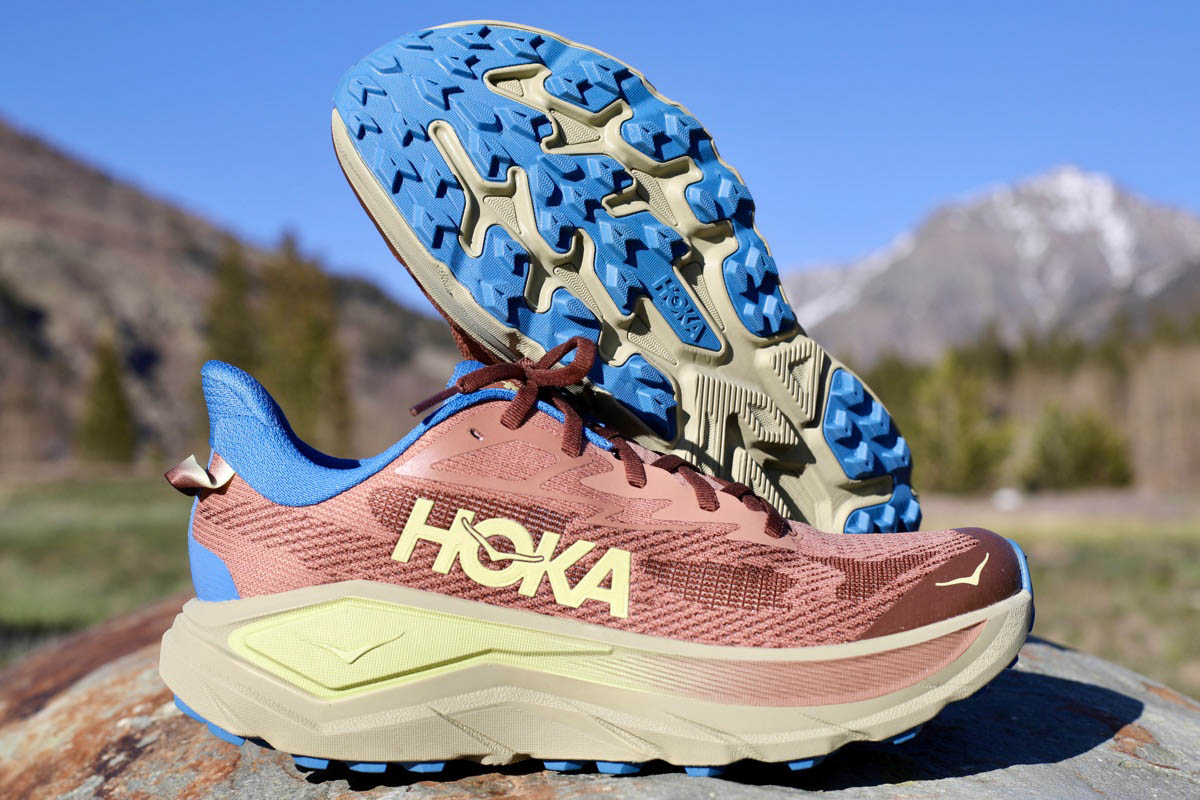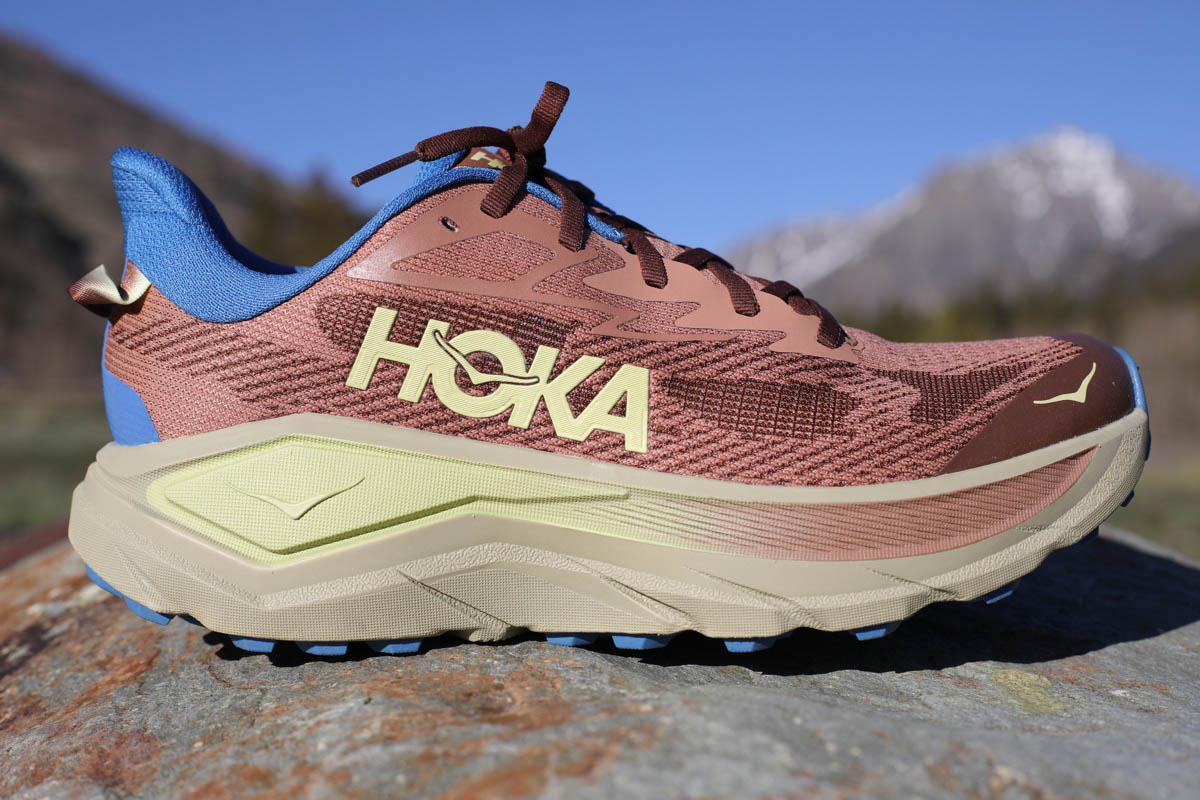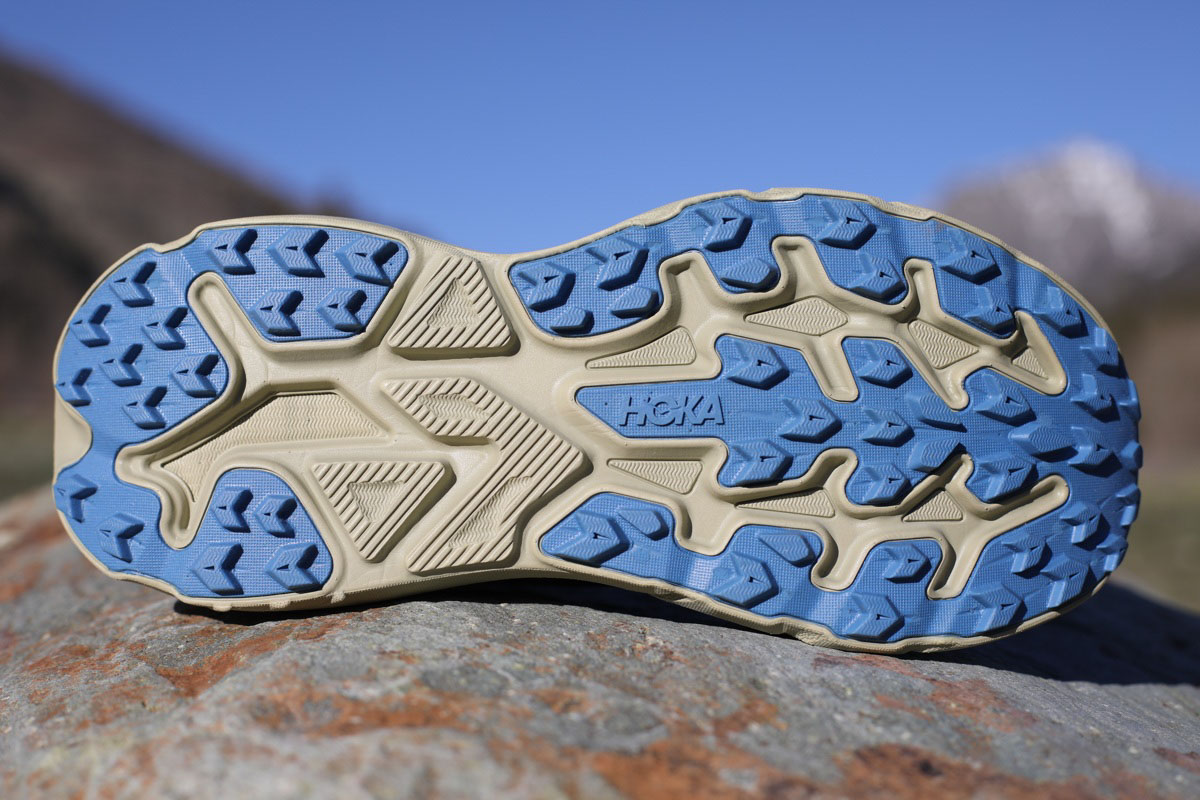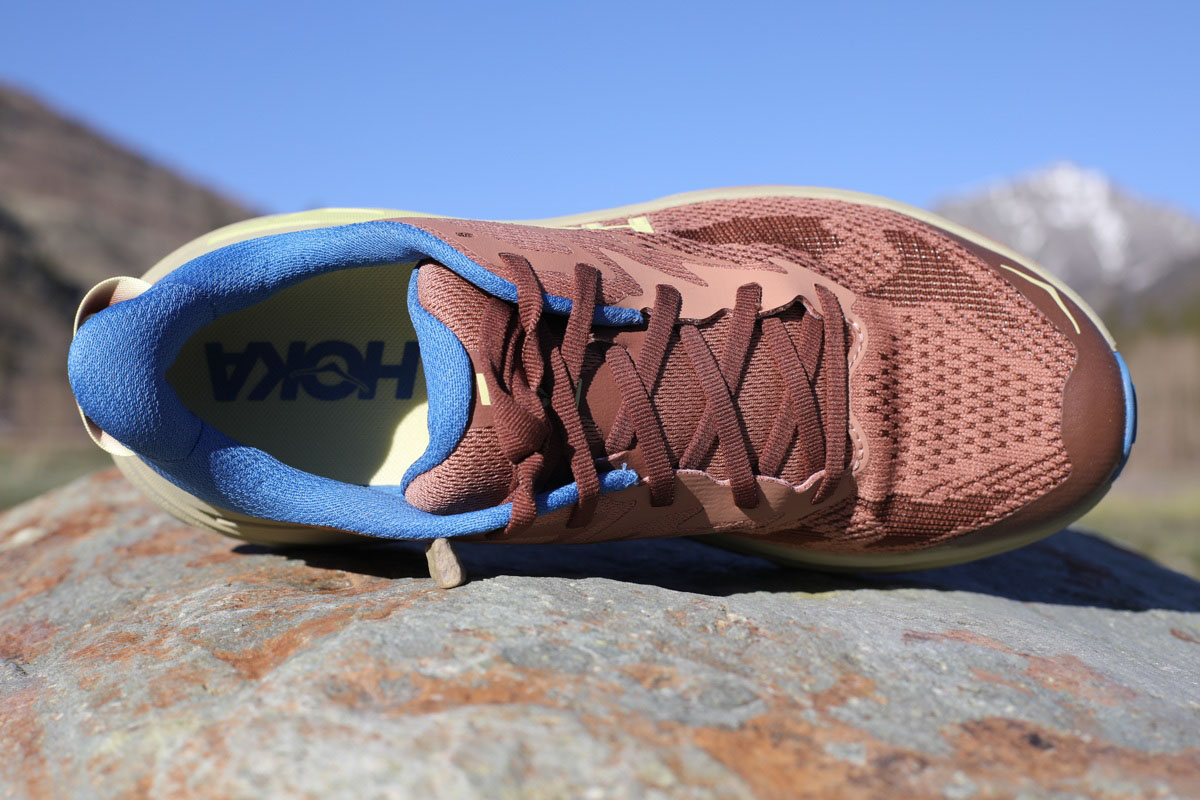While gravel seems to be the latest buzzword in the world of trail running, it’s nothing new for the line of shoes the Hoka Challenger 8 ($155) comes from. The Challenger series has been a longstanding favorite among runners who want a single shoe for both roads and trails — and gravel. For this version, key updates include increased cushioning, a redesigned outsole lug pattern, and tweaks to the shoe’s fit. It’s fairly lightweight for an everyday trail shoe, with an actual weight of 9.3 ounces (264 grams) for a U.S. men’s 9. The 42-millimeter stack height at the heel for the men’s shoe and 39-millimeter stack for the women’s, paired with an 8-millimeter drop, makes this a shoe that will work for many people in many situations. Overall, the Challenger delivers a plush, comfortable ride on roads and non-technical trails.
I took the Challenger 8 onto the trails and roads around Bend, Oregon, and Silverton, Colorado, accumulating more than 160 miles on a pair. I crossed high elevation snow, tromped through mud, and crossed knee-deep creeks. I appreciated the shoe’s roomy toebox, soft cushioning, and versatile application on pavement, gravel, and dirt. Predictably, they came up a bit short on the steep, technical trails of Colorado’s San Juan Mountains, though to be fair, they’re not designed for such extreme terrain.
Shop Women's Hoka Challenger 8Shop Men's Hoka Challenger 8
Hoka Challenger 8 Upper
The Hoka Challenger 8 has an engineered mesh upper that breathes well and dries quickly, even after full submersion in water. On non-technical mountain trail runs, this shoe maintained a secure fit and lockdown, keeping my foot in place on long ascents and descents, even after getting wet. The upper hugs my midfoot comfortably, and the toebox offers room for my toes to wiggle and splay.
The upper’s mesh material feels soft and supple, and it moved with my foot. A layer of TPU around the front adds some protection for the toes, while a layer of cushioning around the heel collar pads the Achilles tendon. There’s a slight rise around the back of the heel collar to help slide the shoe on and off, and this feels supportive against my Achilles without putting any pressure on it. Impressively, after 160 miles, the upper shows almost no wear. By comparison, I’ve worn holes on the inside lining of a comparable pair of trail shoes from a popular brand after 140 miles. The Challenger 8, on the other hand, appears to have many miles of life left.
Hoka Challenger 8 Midsole
My favorite thing about the Hoka Challenger 8 is its oh-so-comfy midsole. This plush, compression-molded EVA midsole strikes a wonderful balance, delivering a pillow-like softness that makes my feet feel happy without feeling too mushy. Of course, runners who prefer a firmer, bouncier, or more responsive ride won’t gravitate toward this shoe, but it will please a wide range of runners who want an everyday running shoe that simply feels good.
The Challenger’s 8-millimeter heel-to-toe drop further adds to its broad appeal. This is an increase from the previous 5-millimeter drop, though most runners probably won’t notice the difference since the drop is still in the moderate range for running shoes. However, if you’ve run in prior versions of this shoe, you might notice the increased heel stack height, which jumped from 37 to 42 millimeters in the men’s shoe, and from 34 to 39 millimeters in the women’s shoe, which includes an additional 2 millimeters of foam throughout the midsole’s length. I’m not sure why nearly every running shoe redesign comes with added cushioning these days, but that seems to be the current trend, alongside overuse of the phrase “gravel grinder.”
Hoka Challenger 8 Outsole
The outsole on the Hoka Challenger 8 also got an upgrade with a redesigned lug pattern for better traction on trails. With 4-millimeter lugs, this shoe indeed transitions well between pavement, dirt, and, ahem, gravel. It’s my shoe of choice when I’m heading out my front door for some easy miles on a trail that I can access after a mile of pavement. The new lug design doesn’t change how the shoe feels on pavement, which is great. Comparing the Challenger 8 with its predecessor, it appears that the current version has slightly more rubber outsole coverage and bears a higher resemblance to a typical trail shoe.
For the most part, I did not experience traction issues on trails, even when crossing sloped snow fields during a mid-July run in the mountains. While it wouldn’t be my top choice for running on packed snow — I prefer shoes with Vibram Megagrip rubber and slightly deeper lugs for that — the Challenger got the job done, and I felt secure in my footing. It also held its own on a run up and down South Sister in Oregon, which involves steep, loose rock that has landed many runners on their backsides.
The only time the Challenger wasn’t quite sufficient was in the San Juan Mountains around Silverton, Colorado. In mid-July, I spent two weeks running steep, rugged trails there, and the Challenger did not provide adequate traction, stability, or support, and I didn’t trust my footing. To be fair, this road-to-trail shoe was not built for such terrain, and after one outing, I spent the remainder of my miles in the Brooks Cascadia 19 or the Hoka Speedgoat 6.
Hoka Challenger 8 Overall Impressions
In summary, the Hoka Challenger 8 is an excellent everyday running shoe for a wide variety of surfaces. It is highly cushioned — like pretty much every running shoe these days — and it feels comfortable, plush, and stable. It is ideal for runners who are mixing up their mileage and running surfaces. It also makes a good shoe for traveling since it is so versatile. Impressively, after 160 miles, this shoe shows very little wear, and I continue to enjoy running in it.
This shoe is limited to moderate trails and won’t perform well on steep and technical terrain. It also lacks the high-end responsiveness that most runners will want in speed workouts. However, for most runners, for most distances, and on most running surfaces, it is a great choice.
Shop Women's Hoka Challenger 8Shop Men's Hoka Challenger 8
Call for Comments
- Have you run in Hoka trail running shoes? Which model is your favorite?
- Have you tried the Hoka Challenger? What do you think of it?
Our Favorite Trail Running Shoes
Learn more about our current favorite trail running shoes in our Best Trail Running Shoes guide.





